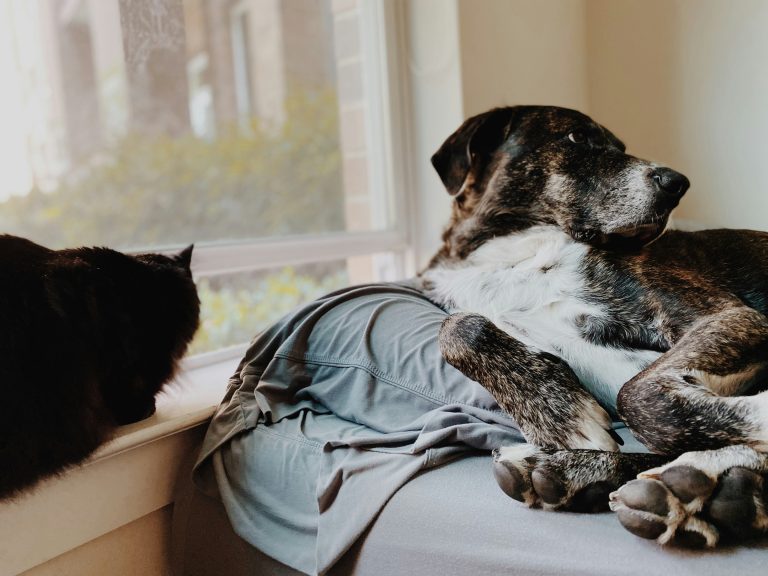
The Ultimate Guide to Daily Pet Care Routines for Busy Apartment Owners
Apartment life with a pet can be wonderful—cozy, efficient, and full of small moments of joy. The key to making it feel easy (even on packed days) is building strong, repeatable daily pet care routines. Predictable rhythms reduce stress, improve behavior, and keep small spaces cleaner. This pillar guide maps out a simple system you can customize to your schedule: morning, midday, evening, and bedtime, plus weekly habits that prevent problems before they start.
Routines aren’t about doing more—they’re about doing the right few things consistently. That means a quick first bathroom break or litter reset, scheduled meals and hydration, short bursts of play or training, and tiny housekeeping touches that keep smells and fur under control. You’ll also find trusted references like the VCA preventive care guidelines and AKC’s downsizing/adaptation tips, plus cornerstone Busy Pet Parent resources including apartment potty training, noise & thunderstorm anxiety relief, and our apartment gear guide.
Routine 1 – Morning Foundation: Start the Day Right
Mornings set the tone for your entire day. Give your dog or cat a reliable first-thing sequence and you’ll see fewer accidents, calmer behavior, and easier evenings. Use this five-step flow: (1) bathroom break or litter scoop, (2) breakfast + fresh water, (3) five minutes of connection, (4) 60–90 second groom/health scan, and (5) a little mental work before you leave. Keep it short and predictable—most busy owners can do the whole cadence in 15–20 minutes, but even 8–10 minutes helps.
Potty/Litter first. Dogs go out immediately—same route, same spot. Consistency builds bladder timing and reduces “uh-oh” moments later. Pair the outing with a cue (“go potty”) so the behavior becomes fast and focused. Cats thrive on a quick scoop-and-stir; mixing clean litter after removing clumps refreshes the box and cuts odor. If you’re new to city life or working with a puppy, see our apartment potty training guide for humane schedules and indoor backup plans.
Breakfast & Hydration (Consistency Wins)
Feed at roughly the same time daily to stabilize digestion and appetite. Refresh water bowls (or check your fountain level) while you prep coffee. Slow feeders help gulpers; whisker-friendly shallow dishes help cats. Apartment tip: use a silicone mat and a stackable bin for tidy, fast resets. If you’re helping a dog adapt to tighter spaces, a predictable morning meal can speed the transition—see AKC advice on adapting to smaller homes.
While your pet eats, do a 60-second tidy: rinse the dish, wipe the mat, and pre-stage the dinner bowl. Two micro-resets per day keep small kitchens feeling clean without weekend pileups. If you use meds or supplements, pre-portion a week’s worth in a labeled pill case—less fuss at 7 a.m.
Five Minutes of Connection (Behavior Booster)
Do a quick, focused engagement burst—two or three cue reps (sit, down, touch), a hallway fetch, or a wand toy for cats. Five deliberate minutes beat 30 distracted ones. This tiny investment pays off later: pets who feel connected in the morning settle better when you’re gone and show fewer “attention-seeking” behaviors.
If storms or city noise make mornings tricky, borrow calm tactics from our guide to pets and thunderstorm anxiety: soft background audio, a calm scent you only use during training, and low-arousal play right before you leave.
Micro Groom & Health Scan (60–90 Seconds)
Give a quick brush-through, peek at ears/eyes, and touch paws. You’re not doing a full groom—just noticing small issues early. If breath or gum color worries you, skim the WSAVA dental guidelines and plan a gradual toothbrushing routine. A 1-minute scan each morning prevents small problems from becoming vet visits later.
Apartment hack: keep a “groom caddy” (brush, wipes, ear cleaner, nail file) in one basket near the feeding spot. You’ll use it more when it’s always at arm’s reach.
Mental Work Before You Leave (Busy Brain, Calm Pet)
Load a puzzle feeder, scatter kibble on a snuffle mat, or prep a simple “find-it” game in the living room. The goal is a calm brain, not a calorie bomb. For dogs or cats who fixate on outside sounds, pre-stage a soothing soundscape and close blinds on busy windows. If fleas/ticks are seasonal in your area, set a monthly reminder and review prevention basics via PetMD’s guidance.
As your morning foundation settles in, add one “nice-to-have” habit at a time—like a 60-second training rep at the door (sit, eye contact, release) or a mini sniff-walk on weekends to scratch the mental-exercise itch. Small, steady upgrades beat big, unsustainable plans every time.
Routine 2 – Midday Balance: Keeping Pets Happy While You’re Away
The middle of the day is the biggest challenge in daily pet care routines for apartment dwellers—especially if you’re gone 6–10 hours. Your goal isn’t to recreate a full walk or playdate; it’s to meet essential needs (bathroom break, water, brief engagement) and prevent boredom from turning into unwanted behaviors. A good midday plan blends automation, enrichment you prepare in the morning, and—when needed—human help.
Think in layers: (1) prepped activities you leave out, (2) environmental comfort (light, sound, temperature), and (3) scheduled check-ins for dogs who need relief or social contact. When these layers are predictable, pets rest more and worry less, which makes evenings smoother for you both.
Automation That Actually Helps
Timed feeders (wet or dry), treat-dispensing cameras, and water fountains are simple wins for long workdays. Use scheduled drops to create small “events” every few hours so your pet has something to anticipate. For cats, a mid-size puzzle toy with a few pieces of kibble encourages foraging without overfeeding. For adult dogs who can comfortably hold it, an early-afternoon camera treat toss paired with your voice cue can be enough contact to get them back to napping.
Keep automation predictable: same times, same device sounds, same placement. Change only one variable at a time so sensitive pets don’t associate surprises with your absence. If your pet startles at hallway noises, close blinds, leave a fan on for brown noise, and choose a resting spot away from the door.
Enrichment You Can Prep in Minutes
Before work, stage a rotation of two or three “jobs”: a snuffle mat or scatter feed; a safe chew or lick mat; and one puzzle feeder set to release mid-shift. Hide-and-seek is powerful—place a small treat pouch behind the sofa one day, under a cardboard box the next. For cats, perch access and window viewing (with blinds partially down to filter busy street visuals) can double as a mental workout.
If shedding is a daily battle, pre-brush in the morning and leave a washable throw on your pet’s preferred nap spot. In the evening, shake it outside and run a quick sweep—our guide on managing pet hair in small apartments shows fast, renter-friendly tricks that keep fur tumbleweeds at bay.
When to Arrange a Human Check-In
Adult dogs generally need a relief break every 6–8 hours; seniors, young dogs, and new rescues may need more. If your schedule regularly exceeds those windows, schedule a reliable mid-shift walker or ask a neighbor for a 10–15 minute visit. Ensure the person follows your cue words and routine: same harness, same exit route, same “go potty” cue, quick water check, then back to the den area. Consistency prevents regression and anxiety spikes.
For noise-sensitive pets, give your helper a brief play script (two minutes of low-arousal engagement, a short sniff-walk, then lights low and fan on). Avoid amping them up right before you return to work—midday is about stability, not excitement.
Routine 3 – Grooming & Hygiene Essentials for Apartment Life
Grooming isn’t just about looking nice—it’s the hygiene engine that keeps small homes odor-free and comfortable. In tight spaces, small habits beat marathon cleanups. Build a lightweight routine around three pillars: (1) micro-grooming, (2) litter or potty-area management, and (3) surface refreshes you can do while the kettle boils. When these are part of your daily pet care routines, weekends stop feeling like catch-up.
Start with a 60–90 second brush most days to pull loose hair before it hits floors and fabric. Keep a soft brush for faces and a slicker for coats that mat. Add a quick paw-and-nail check—catching a split nail early prevents snags on rugs and bedding. Save baths for when they’re truly needed or seasonally scheduled; overbathing can dry skin.
Litter & Potty Zone: Odor Control Without Harsh Chemicals
For cats, scoop twice daily and stir fresh litter to distribute absorbers. Place mats that trap granules at exits and vacuum the area during your evening tidy. For dogs using balcony or indoor backups, use enzyme cleaners on any misses and wash grass pads on a schedule. Keep ventilation in mind—odor clings in small rooms, so crack a window for a few minutes during the nightly reset.
When cleaning surfaces, stick to pet-safe methods and label your spray bottle so no one grabs the wrong thing. Our pet-safe cleaning tips show simple DIY mixes and which fabrics to treat first after accidents.
Weekly Touchpoints That Save Hours Later
Add a once-a-week 10–12 minute “hygiene circuit”: launder throws, wash food/water bowls in hot soapy water, empty and scrub fountain parts, sanitize the litter scoop, and wipe crate or carrier bars. Set a recurring phone reminder and pair it with a podcast so it flies by. Sprinkle baking soda under washable rugs to capture lingering odor, then vacuum the next day.
For long-term health, pair this with routine dental care and parasite prevention on your calendar (you’ve already got the daily micro-scan from Morning Foundation). This small system keeps your home fresh and your pet comfortable—no marathon cleanups required.
Routine 4 – Mental Stimulation & Play Enrichment
Mental work tires pets faster than physical exertion—and that’s a secret weapon for apartment dwellers. In compact spaces, enrichment keeps energy balanced and prevents frustration-driven behaviors. Dogs and cats both crave “puzzles” that mimic natural instincts: sniffing, foraging, chasing, solving, or observing. Making this part of your daily pet care routines ensures they feel accomplished and relaxed.
Dedicate at least two five-minute enrichment breaks—one mid-morning, one evening. Use different types of stimulation each day so it never gets repetitive: scent-based, sound-based, food-based, and social. It’s like cross-training for the brain.
Simple Indoor Brain Games
Try a muffin-tin puzzle: drop a few treats into paper cups and cover them with tennis balls for your dog to nudge away. Cats love “treasure hunts” using crinkled paper or cardboard tunnels. Rotate toys every few days to reset curiosity—store extras in a bin so they feel new again. When you run out of ideas, visit our resource on DIY enrichment toys for easy at-home builds.
Food puzzles aren’t the only option: scent games like “find the treat” or “which hand” engage dogs without physical strain. For cats, play “catch the light” with a laser pointer for 60 seconds—short, successful bursts prevent frustration.
Variety by Day of the Week
Create a mental-stimulation calendar: Monday – scent games; Tuesday – obedience tricks; Wednesday – window watch; Thursday – puzzle toy; Friday – short training; weekend – freestyle play. The predictability of a pattern within novelty keeps your pet both secure and excited.
Keep sessions short and end on success. Overloading the brain can cause overstimulation just like too much running. Think “pleasant challenge,” not “boot camp.” For inspiration on professional-grade enrichment options, explore enrichment toys that encourage natural instincts.
Routine 5 – Physical Exercise in Small Spaces
Movement releases energy, balances hormones, and builds muscle tone—crucial for apartment pets with limited roaming room. Smart scheduling makes physical activity part of your daily pet care routines without needing a backyard. Think “structured micro-bursts” spread throughout the day instead of one long exhausting session.
For dogs, aim for three tiers: short morning potty-walks, mid-day mental work that involves gentle movement, and a longer evening walk or fetch session. For cats, combine vertical play (cat trees, shelves) with chase games to simulate natural hunting cycles.
Creative Indoor Workouts
Turn chores into mini workouts. Ask your dog to “heel” beside you while vacuuming, or have them hold a toy as you fold laundry. For high-energy breeds, scatter-feed breakfast through a snuffle mat and add a few simple agility cues using furniture (weave through chairs, jump a rolled blanket). Cats can get their exercise chasing wand toys up furniture or climbing to new perches—add texture by rotating cardboard scratchers and soft fleece tunnels.
Avoid slick surfaces by laying inexpensive runners or yoga mats for traction. Always reward calm focus after play to help pets transition back into rest mode—consistency in this “excitement-then-cool-down” teaches self-regulation.
Outdoor or Hallway Options
When weather allows, plan structured outdoor time even if it’s brief. A single 15-minute walk packed with sniffing, “wait,” and “watch me” cues delivers richer exercise than an aimless 30-minute loop. Always bring waste bags and be courteous with neighbors; predictable timing keeps your building happy too.
If outdoor access is limited, use safe indoor hallways for low-impact fetch or leash walking drills. Short stair repetitions are great cardio—but only for healthy adult pets with joint clearance. For joint support, check out orthopedic bed recommendations that help recovery after play.
Balancing Rest and Activity
Apartment pets often mirror your energy. Schedule calm time after exercise—soft music, dim lights, or a snuffle toy for winding down. This teaches your companion that relaxation is part of the routine, not a punishment. Over time, the body clock syncs naturally: play, eat, rest, repeat.
Remember, physical and mental exercise work hand in hand. A tired mind equals a calmer body, and vice versa. The best daily pet care routines give both outlets every single day.
Routine 6 – Evening Unwind & Transition to Calm
After a long day, both you and your pet need a signal that “busy time” is ending. Evening is where daily pet care routines turn restorative—focusing on winding down, light activity, and reconnecting before bedtime. The goal is to drain leftover energy gently while reinforcing that nights are for rest, not play marathons.
Build a consistent sequence: walk → feed → light groom → quiet time. When this pattern repeats, pets anticipate it and begin relaxing as soon as you reach for the leash or food bowl. Predictability here leads to deeper sleep and fewer nighttime interruptions.
Evening Walks with Purpose
Choose calmer routes after dark—quiet residential loops or courtyard laps instead of busy streets. Let your dog sniff freely for half the walk; olfactory exploration lowers cortisol. End with a short heel section and calm sit at the door to reinforce composure. If thunder or fireworks are common in your area, see our pets and thunderstorm anxiety guide for desensitization and safe retreat ideas.
Cats benefit from evening “hunt” play—a wand toy or rolling treat ball simulates dusk hunting instinct. Follow with a small meal to mirror natural patterns: hunt, eat, groom, sleep.
Evening Grooming Ritual
Take two minutes to brush loose fur and wipe paws—especially for dogs that walked city sidewalks. This prevents debris from reaching beds or rugs. Check for small cuts or burrs and note anything to watch. Refresh water and bedding; rotate toys so tomorrow feels new. You’ll wake to a cleaner, calmer home.
If your pet’s coat tends to mat or your apartment traps humidity, use a grooming glove instead of a brush for gentle daily maintenance. These micro-touch rituals strengthen trust and reduce shedding before bed.
Routine 7 – Bedtime Bonding & Restful Sleep
Nighttime care is about connection and closure. The final steps in your daily pet care routines reassure your companion that all is well. A calm bedtime ritual—just like a human’s—signals safety and ends the day on affection rather than excitement.
Dim lights and reduce household noise 30 minutes before bed. Offer a last bathroom break or box scoop, then invite quiet snuggles or gentle petting. Speak softly; tone matters more than words. Pets read this slow rhythm as “pack settling time.”
Setting Up the Sleep Environment
Keep the sleep zone consistent: same bed, same corner, low light. Dogs often prefer den-style beds or crates draped with a light blanket to soften apartment sounds; cats enjoy elevated perches or soft cave beds. Avoid over-heating—slightly cool rooms promote deeper sleep. If crate training is part of your bedtime structure, review our crate training for apartment dogs guide for smooth nighttime cues.
Some pets benefit from low white-noise or gentle music. Leave a soft night-light for seniors or rescues prone to disorientation. Always ensure fresh water access, even overnight.
The “Goodnight Cue”
Choose one calm phrase—“bedtime,” “settle,” or “goodnight”—and use it nightly. Over time your pet will associate that word with the winding-down sequence. This tiny linguistic habit helps anxious pets predict closure and rest easier when you leave the room.
End every day with gentle affection or gratitude. It reinforces the emotional bond that makes routines worth following. Tomorrow’s success starts with tonight’s peace.
Routine 8 – Health Monitoring & Preventive Care
Preventive care is the backbone of all daily pet care routines. Regular micro-checks catch issues long before they turn serious—and they’re easy to weave into your day. Think of it as a rolling wellness exam done in tiny moments: one during grooming, another while feeding, a third during play. Over a week, you’ve effectively done a full-body review without scheduling anything extra.
Keep a small notebook or phone note labeled “Pet Health Log.” Record appetite, stool consistency, energy, and any skin or eye changes. Trends matter more than single events. If something seems off for three days straight, that’s your cue to call the vet. For reference, use the VCA preventive guidelines for age-appropriate schedules.
Morning & Evening Quick-Scans
During brushing or cuddle time, check: ears (clean, no odor), eyes (clear), gums (pink), paws (no cracks), coat (no fleas or dryness). Run hands down the back and sides—small lumps or hot spots show up under your fingertips first. Monthly weigh-ins are also simple: stand on your scale holding your pet, then subtract your weight. Sudden changes of 5 % or more mean it’s time for a vet check.
Dental health is often overlooked in apartments where space limits big setups. Keep a finger brush and vet-approved paste by the couch for a 30-second cleaning a few times a week. Review the WSAVA dental guidelines for step-by-step technique.
Emergency & Seasonal Readiness
Build a small emergency kit: first-aid cream, gauze, saline rinse, tweezers, and vet contact cards. Add a spare leash and collapsible bowl near your front door for quick evacuations. Check expiration dates twice yearly—spring and fall. The Red Cross pet-disaster checklist covers exact quantities.
Each season brings different risks: summer heatstroke, fall allergens, winter salt irritation. Rotate care supplies accordingly, and review our room-by-room pet safety guide for hazard prevention.
Routine 9 – Smart Tools & Apartment Hacks
Technology and layout tweaks can shave hours off your week. In small apartments, efficiency equals sanity—and modern tools blend convenience with health tracking. Integrate smart devices gradually so you don’t overwhelm your pet’s senses. The right gear transforms daily pet care routines into autopilot habits.
Start with automation that supports—not replaces—human attention: smart feeders for timed portions, water fountains with filters, air purifiers, and pet-safe plug-in diffusers for odor control. Use one new gadget at a time and give your pet a few days to acclimate to new sounds or motion.
Space-Saving Layout Tricks
Use vertical storage—floating shelves for cat perches, wall hooks for leashes, under-sofa bins for toys. A collapsible drying rack doubles as an indoor agility hurdle. Place washable mats under litter boxes or feeding areas to simplify cleaning. Combine function and décor with neutral-toned beds that blend into furniture; this keeps your space chic and your pet comfortable.
Smart lighting helps too: motion sensors guide nighttime potty trips, while dimmers help pets associate brightness with activity and low light with rest. These micro-cues strengthen your home’s natural rhythm.
Budget-Friendly Smart Buys
Not every helpful product is expensive. Refillable lint rollers, portable vacuums, and collapsible crates save space and effort. Use our budget pet-care tips list for ideas that maintain quality without overspending. For insurance comparisons and cost planning, check Pawlicy Advisor—a transparent overview of coverage that fits apartment lifestyles.
Remember: technology works best when paired with attention. The smartest tool is still a mindful routine—tech just gives you back minutes to spend connecting instead of cleaning.
Routine 10 – Weekly Planning & Consistency
The last pillar of effective daily pet care routines is looking at the bigger picture: consistency across the week. Tiny habits multiply into major stability when tracked and reviewed. A seven-day rhythm prevents skipped feedings, overdue cleanings, and routine drift that confuses pets. Think of this as “maintenance mode”—you’re fine-tuning what already works.
Choose one day—Sunday for most people—to review the week. Restock supplies, sanitize bowls and toys, launder bedding, replace worn enrichment items, and glance over your health log. Adjust schedules if your work hours change. This five-minute calendar check keeps your apartment running like a small, happy ecosystem.
Batching & Habit Stacking
Efficiency grows when tasks piggy-back on existing ones. Scoop litter while coffee brews, brush teeth after your pet’s, wipe bowls while washing dishes. Anchor every small chore to a pre-existing habit so it becomes automatic. In just a few weeks, these pairings turn scattered chores into muscle memory.
Digital reminders help—set phone alerts for medication days, flea treatments, or food deliveries. Our apartment-living gear guide lists time-saving organizers and feeders perfect for this batching mindset.
Building Adaptability Into Routine
Life changes—new jobs, travel, guests—and your routines must flex without breaking. Train simple contingency plans: a friend who can walk the dog, a cat-sitter contact, an emergency crate in the closet. Keep a backup copy of your schedule printed near your door so anyone helping can step in seamlessly.
When stability returns, ease back into normal timing gradually. Pets read your cues; a confident tone and consistent actions tell them everything’s fine. That trust is the ultimate outcome of every well-built routine.
Final Thoughts
Great pet care doesn’t demand endless hours—it thrives on rhythm. The routines you’ve built throughout this guide create trust, predictability, and peace in small-space living. From morning foundations to nightly bonding, each layer reinforces your connection and simplifies your day. When life feels hectic, remember: structure is freedom. The more consistent your habits, the more calm your home becomes.
Use this guide as a living framework. Adjust as seasons, jobs, and pets evolve. Keep exploring our other long-form guides—like helping rescue dogs adjust to apartments or pet-safe cleaning—to refine the small details that make big differences.
Frequently Asked Questions
How can I keep my pet on a routine if my work hours change often?
Anchor the most important events—morning meal, bathroom break, bedtime—around your waking and sleeping times, not the clock. Use smart feeders or a sitter to fill the gaps. Pets adapt to predictability within your lifestyle, not rigid hours.
What’s the best way to create balance for pets in small apartments?
Alternate stimulation types: physical, mental, social, and sensory. Ten minutes of sniffing or puzzle play equals miles of walking in mental value. Rotate toys and vary textures weekly to reset curiosity.
How can I manage noise sensitivity or separation stress?
Keep departures calm and predictable. Pair leaving cues with treats and safe sounds. For thunder or fireworks, create a retreat zone and see our thunderstorm-anxiety post for gentle desensitization tips.
How often should I deep-clean or wash pet items?
Wash food bowls and toys weekly, bedding every one to two weeks, and perform a quick odor check daily. Regular micro-cleans beat major scrubbing sessions and help apartments smell fresh year-round.
What’s one habit that makes the biggest difference?
Consistency. A dependable pattern—same cues, same order—reduces confusion, builds confidence, and strengthens your bond. When pets know what’s next, they relax, and everything else becomes easier.

Join the Busy Pet Parent Newsletter!
Get easy routines, time-saving tips, and the latest gear reviews—delivered straight to your inbox.
Perfect for busy pet owners, apartment dwellers, and anyone who wants a happy, healthy companion (without the stress).
Exclusive guides & checklists
Product recommendations & deals
No spam—unsubscribe anytime!



